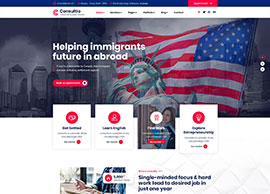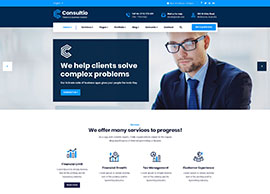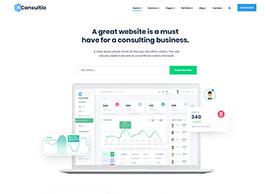
Published in the November/December Issue of Mailing Systems Technology.
We manage over 134,000 pieces of mailing equipment for the largest companies in North America and we wanted to share the best and easiest way to reduce postage costs. There are companies called Presort Services that will pick up your mail daily, weekly or as needed, and commingle it with other clients on their sorting systems to get you lower postage rates. They will make sure your mail meets all postal regulations and there is no work involved except scheduling the pickups. These services will save you 3-54% based on your volumes, densities, weights, and types of mail submitted.

In this article, we will go through the details of how these services work and what items you need to consider to make sure it is the right fit for your company. As I always need to state, I have no affiliation with any presort service, but prior to starting Postal Advocate, did run the largest presort program that had over 4,000 users.
How do these services work?
These providers have one or several sorters that are similar to what the USPS® uses in their facilities. These sorters read the address on the mail piece and spray the barcode on the bottom right. They can then sort the mail into bins to where it is going throughout the country. Presort providers work on a revenue split arrangement with the customer and the USPS. Here is the most common:
- First-Class Mail® Single Piece Postage Rate $.47
- Rate the customer meters the mail $.458 ($.012 savings)
The presort service sorts the mail as deep as they can into the Postal system. Hopefully, most will be to the highest sort levels the USPS offers (AADC and 5-Digit) at rates at $.378-.408 (See chart above) and the USPS pays them the difference in a Value-Added Rebate (VAR). This payment by the USPS covers their transportation, operations, and profit.
Higher volume mailers can typically get a larger percentage of the savings as shown on the chart above. Items that determine your rate are mail volumes, frequency of mailings, where they are going, machine read rates for your mail (typically determined from a test) and how competitive your local market is with other presort providers.
These services have become especially important as the USPS allows all presorted mail up to 3.5 ounces to go at the one-ounce rate. This means the 3-ounce invoice you were paying $.89 to mail could be as low as $.408 with a presort service!
What Mail Qualifies?
- First-Class Mail® Letters – Most presort services are looking for non-handwritten letter mail up to the maximum weight of 3.5 ounces. There are services that will pick up as little as 400 pieces per day or single pickups of 1000 pieces or more. Last year the USPS came out with a program called “Second Ounce Rides Free” to get people adding more content to their mail. This savings only applies at the discounted rates listed on the chart above and creates extra incentive to use a presort service.
- First-Class Mail® Flats – Many presort services will have flat sorting machines and can process non-handwritten pieces as large as 7-12 ounces. The client savings and presort service profit is much greater for flats and typically they can have lower thresholds for pickup. It is best to combine your letter and flat volumes when negotiating rates and determining eligibility. It is important to note that the USPS does not offer a Value Added Rebate (VAR) for flats like they do for letters. This means is that you will need to meter your mail at the lower rates (3 and 5-digit) and the presort service will send you an invoice for the difference of your negotiated rate minus the metered price.
- Marketing Mail – This is the fastest growth area in this space because Marketing Mail® volumes are remaining constant where First-Class Mail® is declining. The model is different because the rate is not based on the sort levels, but on destination entry discounts earned by moving mail closer to its final destination. Most Marketing Mail® given to presort services will already be barcoded and trayed by the client. All the presort service is doing is getting it to the right Destination Network Distribution Center (DNDC) or Destination Sectional Center Facility (SCF) where the mail is going. In exchange the USPS offers additional discounts shown below that presort service will share in for doing the work.

How to select the right service provider?
In many markets you may not have a choice because there is only one presort provider covering your area. In these situations you still want to look at their reputation in the marketplace and potentially take a tour of their facility to make sure your mail is going to be handled in a secure manor. If you are lucky enough to have a choice of vendors, here are the items you want to consider:
- Rate/Savings – What savings level are they offering and do they charge fees for any of the following:
- Transportation
- Items that cannot be read on their machines.
- Address corrections and running mail through FASTForward®.
- Other miscellaneous charges.
- MPTQM (Mail Preparation Total Quality Management) Certifications – The best run presort services will have this level of certification that shows they meet the highest standards in processing and security.
- Security Procedures – Since they will be handling your mail, you need to make sure it is processed in a secure environment. As an example, this mail may have financial and medical information that could be harmful if exposed.
- What types of mail can they process? Letters, flats, standard, international?
- What other services do they provide? Metering, fulfillment etc.
I do not have the exact numbers, but I am going to guess that there are about 100-200 independent presort services throughout the US. Most of these will have 1-3 sites located in a specific geographic area. Pitney Bowes also created the largest presort network in the US with its acquisition of PSI. They have over 30 facilities and process over 15 billion pieces each year. Because of their footprint, they can move mail between facilities easily that can speed delivery, as well as pick up mail in areas where they do not have a site, furthering their reach.
What else do I need to know?
There are specific items you need to understand before committing to a service.
- Pickup Time – What time can they pick up your mail? Most companies want to schedule for 4-5:00 pm because that is when the mail is complete. Can they accommodate this schedule or will it need to be earlier based on when their truck is in your area?
- Day Delay – Most presort services will require that you date the mail for the next day because they are going to process it that evening and deposit it into the mail in the morning. Mail moving out of the area can make up some of this time based on it being barcoded and sorted but this does delay local mail.
- Billing Charges – As we discussed above, know exactly what you are paying for. I have seen presort invoices where when the fees were added back in, were more expensive than single piece rates. Low to mid volume customers may do best with a no bill program on their letter mail.
- Address Quality Issues – Can the presort provider give you any data on mail that gets changed through their FASTForward® system so you can clean up your addresses for the future?
- Consider Barcoding Yourself – If you do consistent mailings, you may want to barcode these in-house and not have to share the savings. Look at the cost of staff, software, hardware and transportation to make the right decision.
Outside Expertise – Third party consultants may be able to help you get better rates because they can bring their industry expertise in to help negotiate your new agreements. Not only can they help you analyze the items above, but they can develop a strategy to give you greater leverage with new contracts. They can then organize a bid with a defined scope that makes the spends and fees more visible and puts you in more control to make the best future financial agreement.
Conclusion
Presort Services are the best and easiest way to reduce postage costs because they do all the work and you save 3-54% on your mail. Hopefully this article gave you a framework to look at these providers to see if they are a fit for your operation.
- Rate/Savings – What savings level are they offering and do they charge fees for any of the following:












































